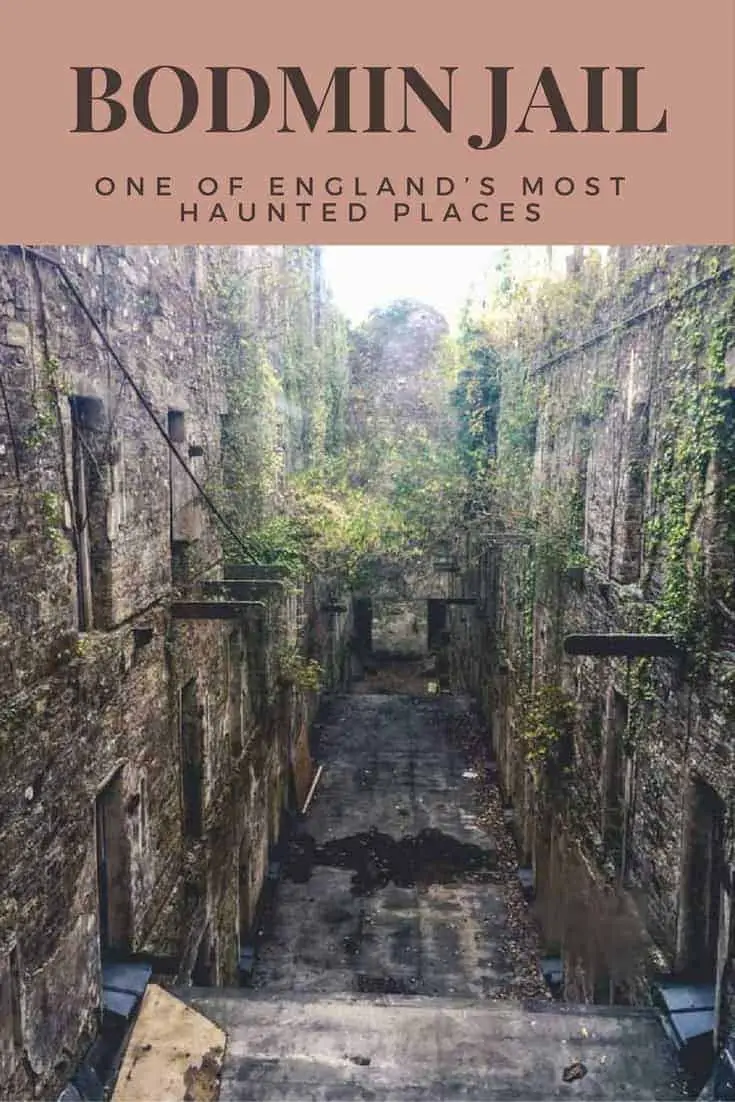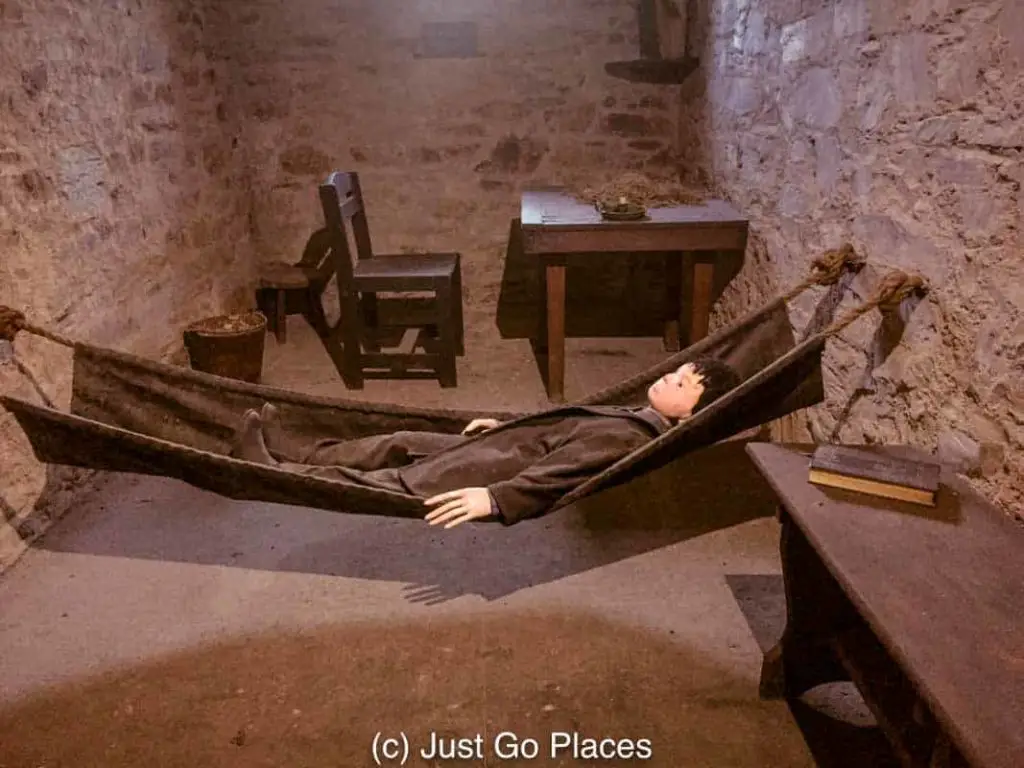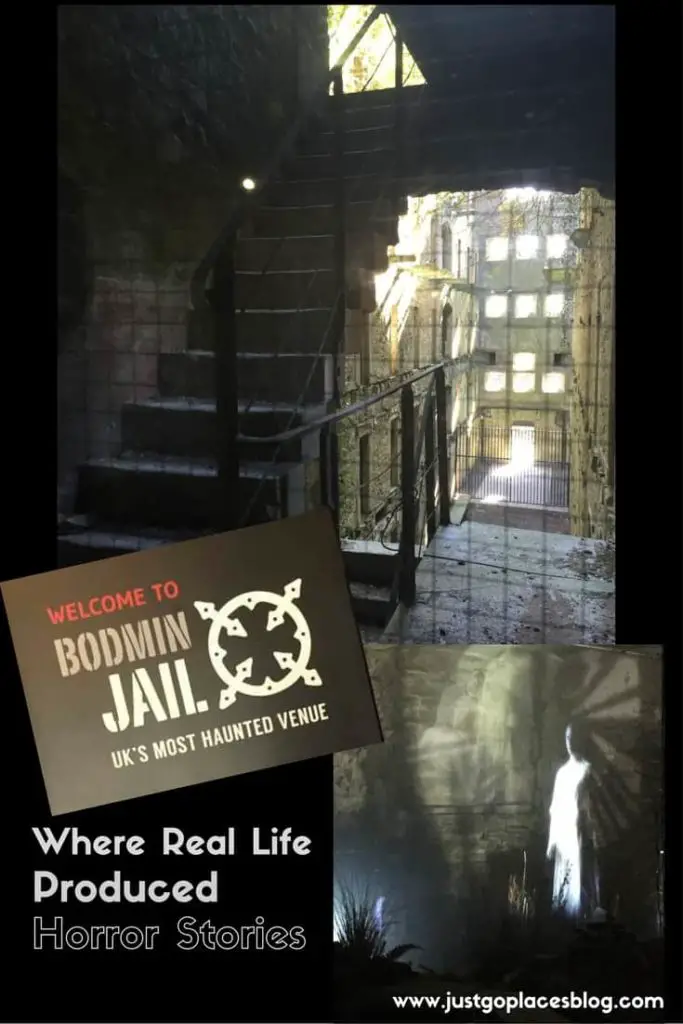Bodmin Jail in Cornwall likes to call itself the most haunted place in England. Considering the country has thousands of years of history with murder, mayhem and massacre galore (all of which could lead to ghost stories), this claim is pretty substantial. On the other hand, a woman I met had been to one of the paranormal evening events at Bodmin Jail where the leader brought out a ouija board. As anyone who has seen any movie with a ouija board knows, it is always a bad idea to consult a ouija board (especially in a haunted place). Not surprisingly, the ouija board spelled out a random name that the lady recognised and it completely freaked her out. We didn’t see any ghosts during our (daytime) visit to Bodmin Jail but we were left haunted by some of the stories of the prisoners the jail had housed.
Contents
The History of Bodmin Jail
Bodmin Jail in Cornwall was an operational prison from 1779 to 1927. Like the Eastern State Penitentiary we went to in Philadelphia, it was built with lofty goals as a visionary forward-thinking place. For example, Bodmin Jail was the first British prison to hold prisoners in individual cells. As the years went on, these lofty goals went by the wayside.
In 1869, when the law changed so that you could no longer be put in prison for being in debt, Bodmin Jail had spare capacity. The jail gave a portion of its buildings to the Royal Navy to become a naval prison. During World War I, the prison housed some British treasures such as the Crown Jewels.
Nowadays, Bodmin Jail is privately owned. The complex is enormous and only part of it is open as a museum, restaurant, cafe and obligatory gift shop. It is open for daytime visits and the occasional evening event (ghost walks, parties etc.). You can even get married at Bodmin Jail. I kid you not. You have a choice of a beautiful English countryside setting for your wedding or you can get married in a haunted jail. Nothing so queer as folk.
The Bodmin Jail Tour
The tour of Bodmin Jail gives you a good insight into how society worked in the 19th century. There was a strict adherence to the letter of the law. If you were a kid or an adult, stealing was considered stealing. It definitely did not matter that you were stealing because you were starving. All that liberal compassion came later in history.
The stories at Bodmin Jail left you under no illusion that life was anything but brutal for the poor. My children were shocked to learn that kids from those times were left homeless if their parents died. They had never considered that being a street urchin was preferable to living in a workhouse or orphanage.
There was a story of one 9 year old boy who was sentenced to death for stealing a tuppence (two pennies) worth of ink. He’d been living on the street since he was 6 years old. He begged and stole for food until he was eventually caught. Instead of the death sentence, he was sentenced to life transportation. It didn’t say where but presumably Australia.
Exhibits within Bodmin Jail
Some of the exhibits are not-very-scary figurines showing prisoners and the day-to-day life of the prisoners.
For example, this guy Samuel Glasson from Truro was sent to jail more times than anyone else in Cornwall. He spent a total of 11 years of his life in Bodmin Jail for various drunk and disorderly charges. He had never actually committed a felony crime but was a miserable drunkard who refused to go home quietly when asked to do so by the police.
Some of the exhibits were more high-tech and involved holograms. I felt the most powerful exhibits were the photographs, especially of the children, who just leaked bleak and hopeless.
Everyday Prison Life
Just because you weren’t executed, did not mean that you had an easy time in jail.
My kids were fascinated to learn that prisoners were only allowed to have a bath once every three months! Even they agreed that was gross.
The food was basic and barely enough to keep people alive. For the most part, the rations consisted of bread, gruel and cheese. If you were serving hard labor, you might get a few more ounces of food.
Hard labor was supposed to make you a better person and teach you the error of your ways. For example, women who were suspected of being prostitutes were put in jail and made to do hard labor. The jail had examples of women who had been incarcerated for 2-3 months of hard labor.
At Bodmin Jail, they had a treadmill which prisoners would walk on to create power for the jail’s corn mill. Prisoners would take turns – 15 minutes on the treadmill and 15 minutes picking apart old rope – for a total of 8 hours a day, 6 days a week. This resulted in each prisoner climbing 10,000 feet per day!! Talk about glutes of steel. The treadmill was only abolished in 1898.
Ghost Stories
The most famous ghost story involves a lady who killed her child. She was unmarried with two children out of wedlock at the age of 28. Her younger son was a cripple. She took up with a soldier who promised to marry her if she got rid of the younger son. So she threw the crippled son down a mine shaft. When the soldier was questioned, he was like all ‘huh??’ He claimed he had never promised marriage or asked her to get rid of her child. A jury took pity on her but a judge decided she should be put to death. She can be seen by children and pregnant women crying her way around the jail.
Along with ghosts of prisoners, people have said they have seen ghosts of former wardens and prison officers. Can you imagine coming back to haunt the place that you worked? For example, you could be stuck in a cubicle for your entire life and your afterlife!
Not Such a Pleasant Childhood
My kids pointed out that there were a lot of child killers at the prison. Without access to contraception, and limited other forms of recreation, children were a frequent occurrence in and out of marriage. One man was executed for killing his illegitimate child born to a woman who was helping his wife while the wife was pregnant with their 8th child.
Children were kept in jail with their parents if they had nowhere else to go. If they were old enough, they were put to work doing hard labor or sent out to the quarries. The kids would get picked on by the guards and other inmates. Prison rations were barely enough and so adults would steal food from the children. It was just a battle for survival.
Hangings at Bodmin Jail
About 50 people were hanged at Bodmin Jail from 1785 to 1909.
Before 1868, hangmen had to bring their own rope! Thousands of people would gather to watch a hanging. After the hanging, the hangman would cut off little bits of rope to sell as souvenirs. A hangman could make out very well when you added up his souvenir fees and his services fees. For example, in 1840, 20-25,000 people came to see a double hanging of two bothers. Public hangings were a spectacle – reality TV without the scripting.
Visiting Bodmin Jail in Cornwall
Bodmin Jail reminds visitors that it is an all-weather activity. After all, in England the weather is never certain. We thought this jail was fascinating whether or not you go on a rainy day. Like a lot of places in Cornwall, this attraction is dog-friendly. On the other hand, Bodmin Jail is not wheelchair accessible and I would find it very difficult to navigate a baby buggy through some of the staircases.













